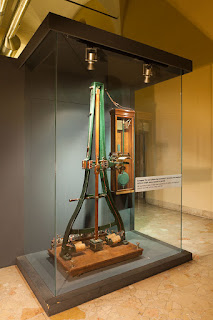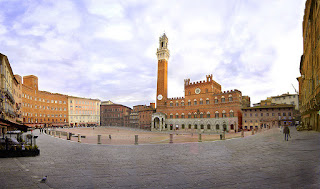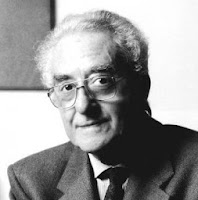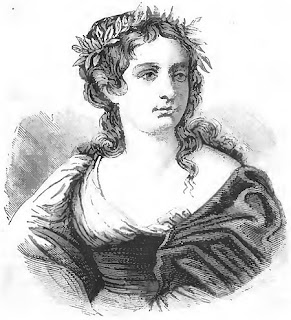Film and TV star who wrote the iconic song Arrivederci Roma
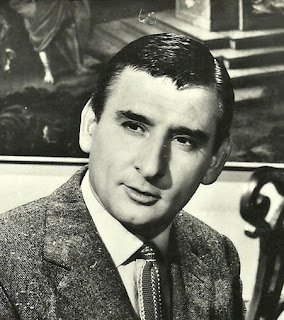 |
| Renato Rascel enjoyed a remarkable career as a singer, songwriter and actor |
Rascel was Italy’s entry at Eurovision 1960 in London, singing Romantica, with which he had won the Sanremo Music Festival earlier in the year. Romantica finished eighth overall in London.
He is arguably most famous, however, for the song Arrivederci Roma, which he wrote for the 1955 film of the same name, in which he starred with the Italian-American tenor and actor Mario Lanza, which was subsequently released for English and American cinema audiences with the title Seven Hills of Rome.
Arrivederci Roma quickly became a favourite Italian song and scores of big-name singers recorded cover versions, including Bing Crosby, Connie Francis, Dean Martin, Dionne Warwick, Nat King Cole, Perry Como and Vic Damone.
Only a year earlier, Rascel had written the best-selling Italian song of 1954 in Te voglio bene tanto tanto (I Love You So Much).
 |
| Rascel performing at the Eurovision Song Contest in London in 1960 |
As Renato Ranucci, he grew up in his parents’ home city, Rome, and sang in a choir at St Peter's Basilica. At the age of 14, he began to play drums in ballrooms around Rome before breaking into the growing comedy revue scene as an actor, dancer and clown. His first major stage role was in the operetta Al cavallino bianco, by the Austrian composer Ralph Benatzky.
In 1941 he launched his own theatre company and he began to develop a distinctive kind of humour that became known as ‘non-sense’ and which won him huge popularity. He made play of his small stature - he was only 5ft 2ins tall - becoming known as the il piccoletto nazionale - The Tiny Italian - and exaggerated his smallness by wearing oversized coats.
One of the characters he created for his stage act was called ‘Il Corazziere’, an irony based on the fact that the Corazziere division in the Italian army recruited only soldiers over six feet tall.
His style of humour was seen as ideal for the big screen, where comic characters were all the rage. His movie debut came in 1942 in Pazzo d’amore (Crazy For Love) and began a new phase in his career that saw him appear in more than 60 comedy or drama features.
 |
| Renato Rascel starred in Alberto Lattuada's 1952 film Il cappotto (The Overcoat) |
Rascel continue his film career well into his 60s, appearing as the blind man in Franco Zaffirelli’s Jesus of Nazareth in 1977.
He also made his mark in a big way in television. When Rai began broadcasting as Italy’s first national TV network in the 1950s, Rascel was chosen as host for the first Saturday night variety shows, among them Rascel la nuit and Stasera Rascel City.
In the 1970s he achieved fame all over again when he was chosen to play the crime-solving priest Father Brown in a series based on the character created by the English novelist G K Chesterton. The series ran for several seasons.
Rascel died in Rome of heart failure at the age of 78 in 1990.
| Carlo Mollino's modern auditorium is a feature of the rebuilt Teatro Regio in Turin |
The main opera venue in Turin is the Teatro Regio, which opened originally in 1740 and was re-opened in 1973 after a long closure following a fire. Architect Carlo Mollino created a striking contemporary interior design behind a reconstruction of the original facade. One of the oldest and most important theatres not only in Turin but in Italy is the Teatro Carignano in Turin, which is believed to date back to 1711, although it has been rebuilt several times over the centuries. Today it is owned by the city of Turin and is used mainly to stage plays.
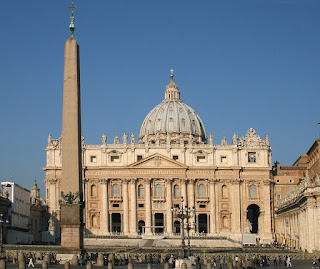 |
| The facade, designed by Carlo Maderno, of the vast St Peter's Basilica in Rome |
From conception to completion, St Peter's Basilica in Rome, where Rascel sang in a choir as a schooboy, took more than 150 years to build. Suggested by Pope Nicholas V in about 1450, at which time the original St Peter's was near collapse, it was not finished until 1615. Although the principal design input from the laying of the first stone in 1506 came from Donato Bramante, Michelangelo, Maderno and Bernini, contributions were also made by Giuliano da Sangallo, Fra Giocondo, Raphael and Antonio da Sangallo. Michelangelo became involved with reluctance, ironically, after Pope Paul III's first choice as architect, Giulio Romano, died before he could take up the post and second choice Jacopo Sansovino refused to leave Venice.
More reading:
Why Totò is still remembered as Italy's funniest performer
The Oscar-winning talents of Anna Magnani
Mario Monicelli - the father of Commedia all'Italiana
Also on this day:
1937: The death of left-wing intellectual Antonio Gramsci
1942: The birth of the entrepreneur and film producer Vittorio Cecchi Gori
2014: The canonisation of Popes John XXIII and John Paul II
Home








